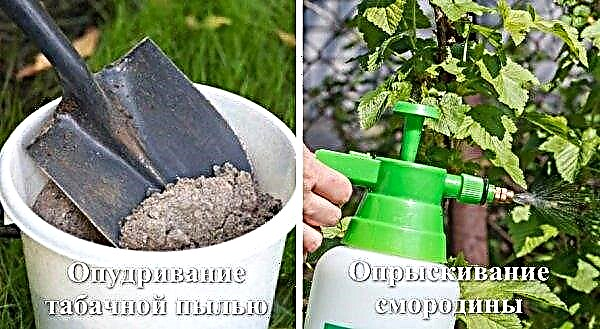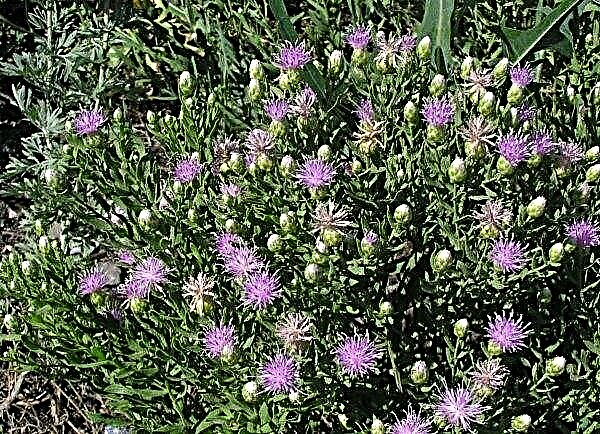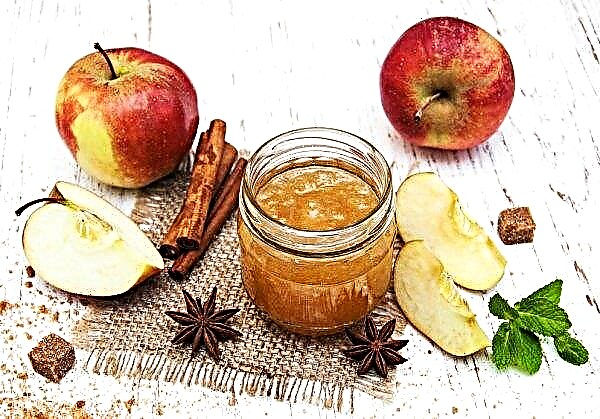Violet is a beautiful houseplant that is used as a decor. There are some factors due to which the flower begins to suffer and may die. You will learn from the article about the causes of withering of the leaves and about the signal of what violations this phenomenon can be.
Why violet leaves wither: the main reasons
There are several reasons why the leaves of Saintpaulia turn black. More often this leads to non-compliance with the conditions of the flower.
Important! When growing violets, it is necessary to provide it with a constant temperature for the content: + 18 ° ... + 25 ° C.
Temperature violation
Violation of the temperature regime is considered one of the key reasons why violet leaves wilt. If the flowerpot with the plant is installed on the windowsill in the immediate vicinity of the heating source, it raises the leaves up to protect from heat. In addition, the leaves may turn yellow when exposed to strong heat. At low temperatures, flower development slows down, leaves are covered with yellow or brown spots.
Hypothermia
Another cause of flower leaf wilting may be hypothermia. This is due to a sharp temperature drop (for example, central heating has turned off). When airing the room in the winter, keep in mind that the topsoil in the pot may be moist, which will lead to hypothermia of the flower. It is necessary to take into account the fact that the plant tolerates hypothermia better in a plastic pot than in a clay or ceramic pot, because when moisture evaporates slowly, cooling will not be so fast.
Did you know? Violet flowers are used in medicine, they are added to drugs that are used to treat kidneys, bronchitis, polyarthritis and purulent skin lesions.
Violation of irrigation and fertilization
Incorrect watering and untimely application of fertilizers or their excess also negatively affect the flower. With abundant watering of the plant, root decay can begin, as well as oxygen starvation, as a result of which the metabolism of the plant is disturbed. As a result, the leaves will begin to curl. In this case, it is necessary to extract water that accumulates in the sump. With a lack of moisture in the soil, the flower will begin to dry out. The temperature of the water also matters. Watering cold has a negative effect on the flowering of violets, and also leads to decay of the roots. Fertilizing to enrich with minerals also affects the condition of the plant. It is necessary to observe the correct and timely feeding of the flower. With a lack of minerals, the plant begins to take the necessary substances from the lower leaves. With an excess of fertilizer, especially with a nitrogen content, the leaves will curl, and, ultimately, the flower may die.
Fertilizing to enrich with minerals also affects the condition of the plant. It is necessary to observe the correct and timely feeding of the flower. With a lack of minerals, the plant begins to take the necessary substances from the lower leaves. With an excess of fertilizer, especially with a nitrogen content, the leaves will curl, and, ultimately, the flower may die.
Important! Water for irrigation should be at room temperature, not hard.
Dense substrate
When buying and replanting, pay attention to the density of the soil. The substrate in which the flower is located should be loose, it must pass air and moisture well. Dense soil retains water, as a result of which a white coating may appear on the upper layer of the substrate or worse - the root system will begin to rot, as the water stagnates inside, the soil does not allow air to pass through and there is no way for it to evaporate. In this regard, it is not necessary to take the soil from the beds when transplanting, since it is often dense or with the presence of clods, and it can also contain spores of fungal infections or pests. When buying a substrate in specialized stores, it must be diluted, because in the finished mixtures there are minerals, peat and other components that can adversely affect the plant.
In this regard, it is not necessary to take the soil from the beds when transplanting, since it is often dense or with the presence of clods, and it can also contain spores of fungal infections or pests. When buying a substrate in specialized stores, it must be diluted, because in the finished mixtures there are minerals, peat and other components that can adversely affect the plant.
Root diseases
Damage to the root system can be caused by diseases and pests. Violet diseases include:
- Brown rot. The disease affects young shoots and rooted leaves. Signs: the stem at the base becomes soft and thin, has a brown or brown color, a white filamentous coating appears on the upper soil layer. If there is brown rot, it is necessary to remove the nearest plants from the diseased flower, since the disease is contagious.
- Root rot. Signs: a change in the color of the foliage (it becomes dull), the leaves begin to fade, if you take the plant out of the pot, you can see soft brown roots affected by a fungus that multiplies rapidly in a humid environment.
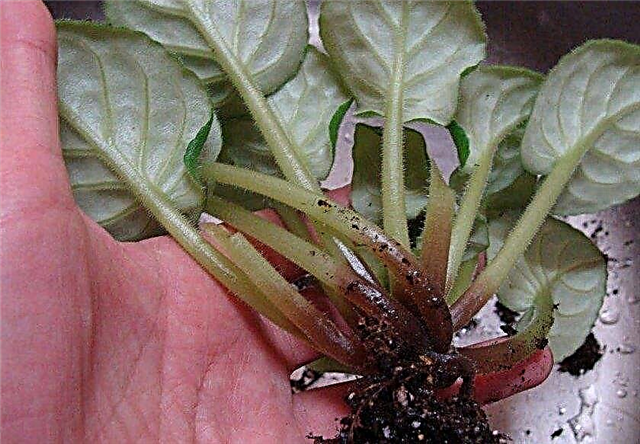
- Powdery Mildew Signs: white plaque appears on the leaves, the plant becomes infected with fungal spores that are in the soil. The disease affects flowers that have recently been transplanted.
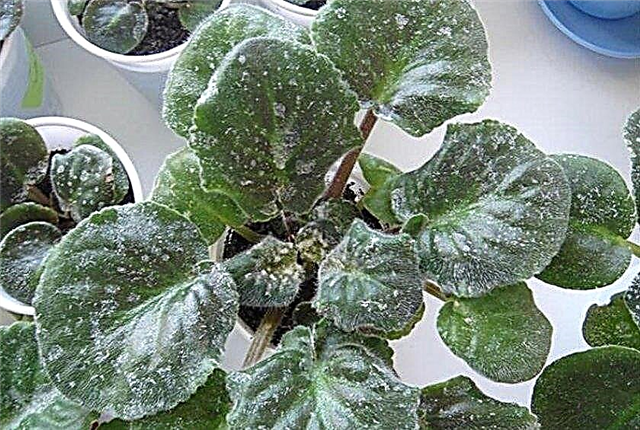
Pests include:
- Nematode. These are worms that are in the soil. Penetrate into the root system and blood vessels, which enrich the leaves and trunk with nutrients. The pest eats the juice of the plant, poisoning it with toxins, disrupting the supply of tissues with necessary minerals. In the presence of a nematode, the plant withers, does not bloom, the stem is thickened, the leaves weaken and grow smaller.
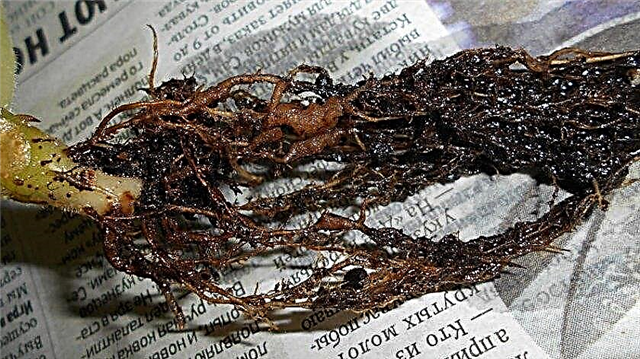
- Mealybug. The main sign of the insect is yellowing or falling of leaves and the appearance of damage on them, in which fungal infections then form. White clumps appear on the upper soil layer, these are areas in which parasites accumulate, which feed on the juices of the flower.
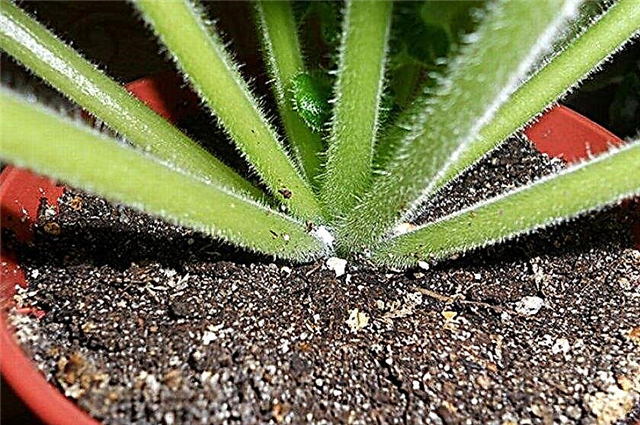
How to save a plant?
To save a plant, first of all, it is necessary to determine what it suffers from.
If the leaves fade as a result of waterlogging, in order to save the flower, it is necessary:
- Get it out of the pot, inspect the roots.
- Remove damaged parts of the root system, and rinse the healthy part with water at room temperature.
- Dry and transplant in a clean pot with a new substrate.
Did you know? In Parma, one of the cities of Italy, perfumes are made according to an old recipe of 1870 from Parma violets.
If the problem is in a dense or with high acidity substrate, The following measures should be taken:
- Get the flower out of the pot.
- Prepare the soil for transplanting from deciduous land, peat and sand in a ratio of 4: 1: 1.
- Take a new pot and fill its bottom with pebble drainage.
- Fill with half-prepared soil.
- Set the violet, spread its roots and gently sprinkle with soil.
- Compact the soil.
Also, do not overly fertilize the flower, since a large number of mineral fertilizers will affect it badly. The plant will weaken, its growth and flowering will stop. Another increase in nutrition can provoke root burns. To avoid this, an urgent need to transplant a flower.
If the flower is infected with brown or root rot, you must:
- Remove the flower from the pot and examine its roots - the absence of white roots means that the violet is infected.
- Remove the lower leaves and cut the root part (in the presence of brown spots, cut the stem higher, if the stem is completely damaged, the flower must be destroyed).
- If you reach a healthy section of the stem, it will be purple in color, it must be cleaned from the lower leaves by 1-1.5 cm.
- Treat with fungicide, leave for half an hour.
- When the specified time has passed, place in a substrate of vermiculite, water and soil, so that new roots form.
- Put a plastic bag on the plant to create a greenhouse effect.
- Move the violet to a cool place and use fluorescent lamps as light.
- When the roots are formed, the flower can be transplanted into a pot.
In the presence of powdery mildew, the following measures should be taken:
- Inspect the violet, remove damaged leaves.
- To process soil and leaves with fungicide ("Fundazol" or "Topaz").
- Place the flower in a warm place and leave to dry.
If the plant is infected with a mealybug, you must:
- Remove dry leaves as a pest may hide in them.
- Conduct a thorough inspection of the flower, if parasites are found, they need to be removed, and the wounds treated with a soap solution.
- Treat the soil with Fitoverm, repeat the procedure after a week.
- Rinse the leaves with warm water for 5 days.
Video: how to deal with mealybug on violets
To get rid of the nematode, it is necessary to dilute Levamisole in water in a ratio of 1: 1. Water the flower with this solution, repeat after a week. You can also put a flower pot in a container with water, the temperature of which is + 40 ° C, because it is at this temperature that the pest dies.
Prevention
For preventive purposes, in order to protect the violet from diseases and pests, it is necessary to follow these actions:
- when buying a new flower, do not immediately place it near existing flowers, keep it quarantined for a month in an individual place to avoid illnesses;
- when buying a blooming violet, it is better to remove inflorescences, this will reduce the chance of getting thrips;
- Before planting or transplanting, it is necessary to decontaminate the soil and pot;
- keep the plant at the right temperature, and also provide it with timely watering and fertilizing in the right proportions;
- conduct a monthly inspection of the flower for parasites; if they are detected, treat it with fungicides or insecticides.

Useful Violet Care Tips
To grow a violet and enjoy its beautiful flowering, you must adhere to such rules for the care of:
- Place in a well-lit part of the room, it is better in the western, while not exposing to direct sunlight.
- In winter, the plant does not have enough light, so it is necessary to provide daylight hours at least 12-13 hours a day using cold fluorescent lamps, which must be turned on and off at the same time.
- Do not place the plant near the radiators during their operation.
- When transplanting, use a small plastic pot with a diameter of 14 cm and a height of 10 cm, fill it with drainage from pebbles or expanded clay, you can also add a little charcoal.
- Use water at room temperature for watering. Pour once a week into the pan, drain the remaining water to avoid decay.
- Fertilizing costs 2 times a month during the period of the appearance of inflorescences. In the period of calm, it is enough to fertilize the plant with an interval of 15 days. You can use Kemira-Lux fertilizer.
- It is necessary to transplant the violet annually, while changing the soil.
- If there is dust on the leaves, it is necessary to spray them with warm water and let it drain, but do not immediately put the wet plant on the window under the sun, otherwise spots will form on the leaves.
- Regularly prune wilted and dry shoots, and also form a bush.
Violet is a beautiful flower with high decorative qualities. To prolong its life and flowering, follow the rules for caring for the flower, water it on time, fertilize it and do not forget to transplant it as the roots grow.







